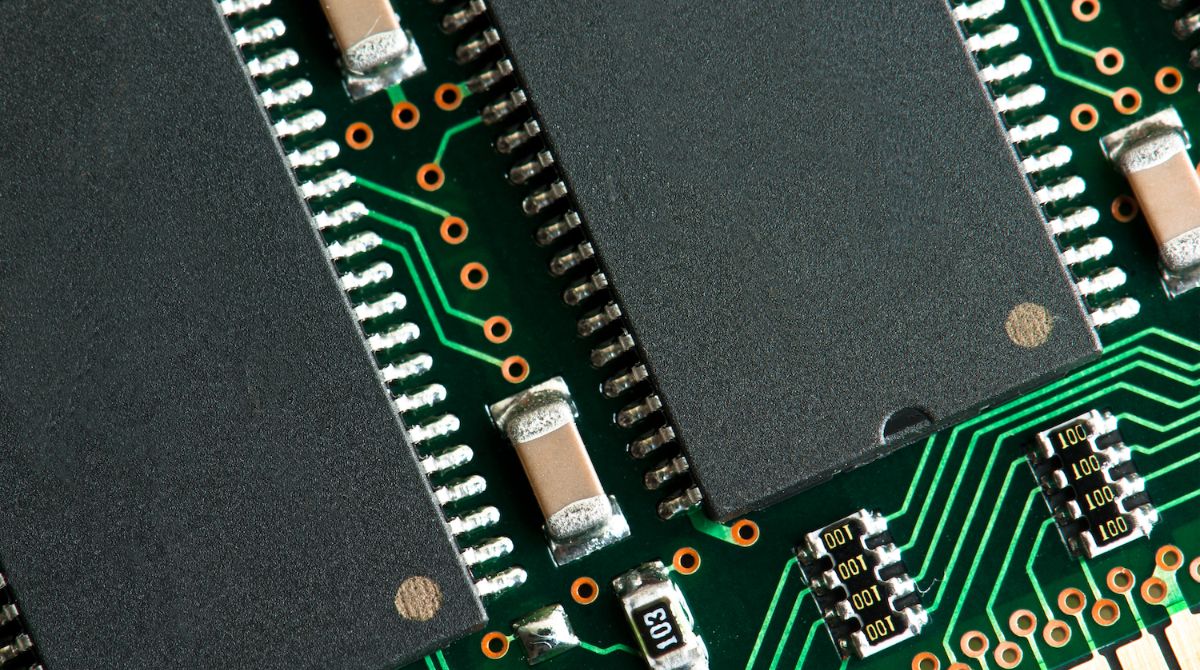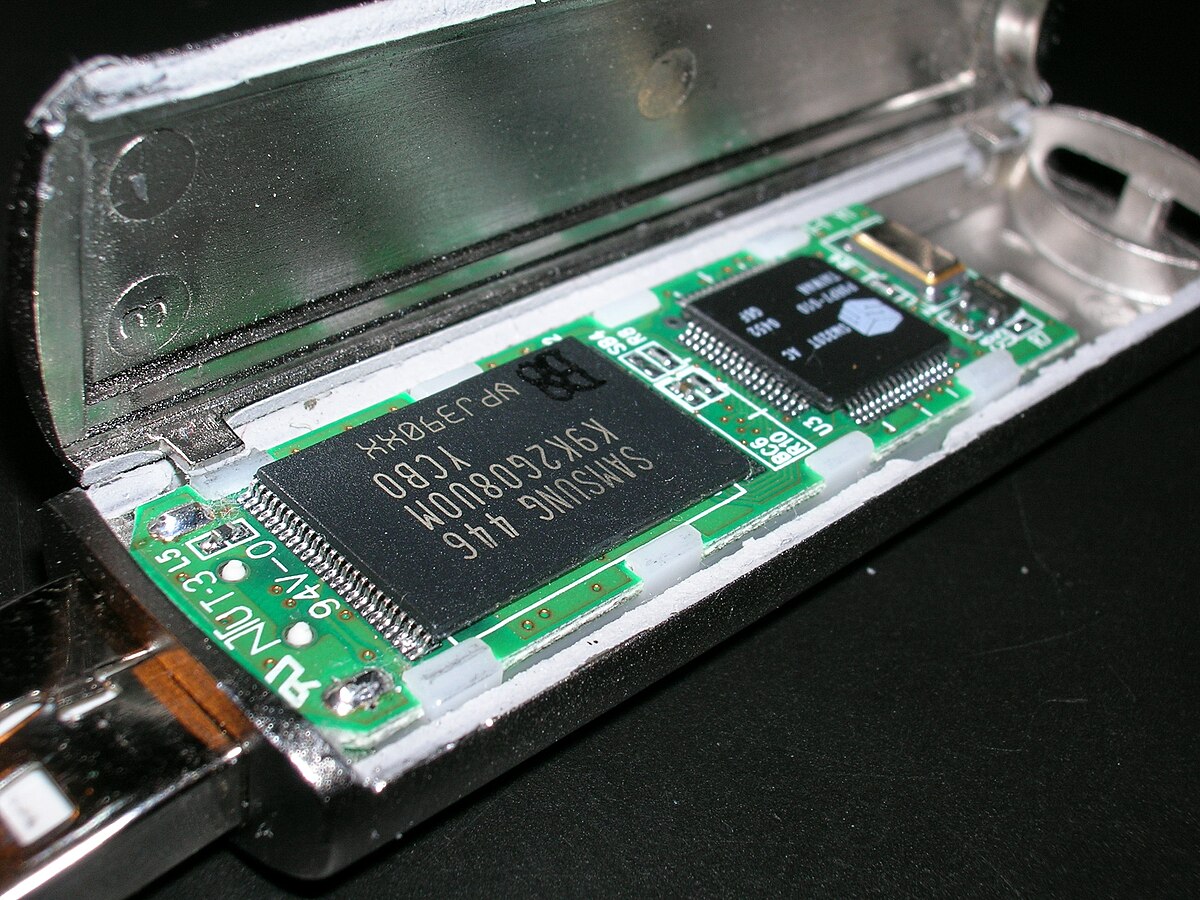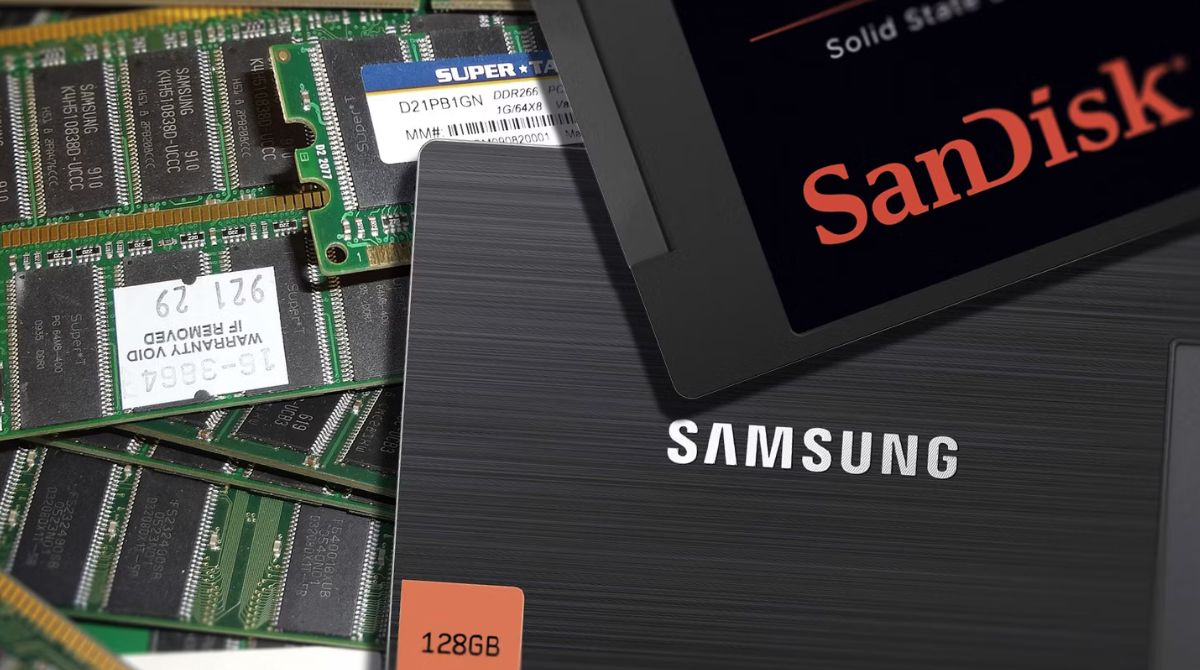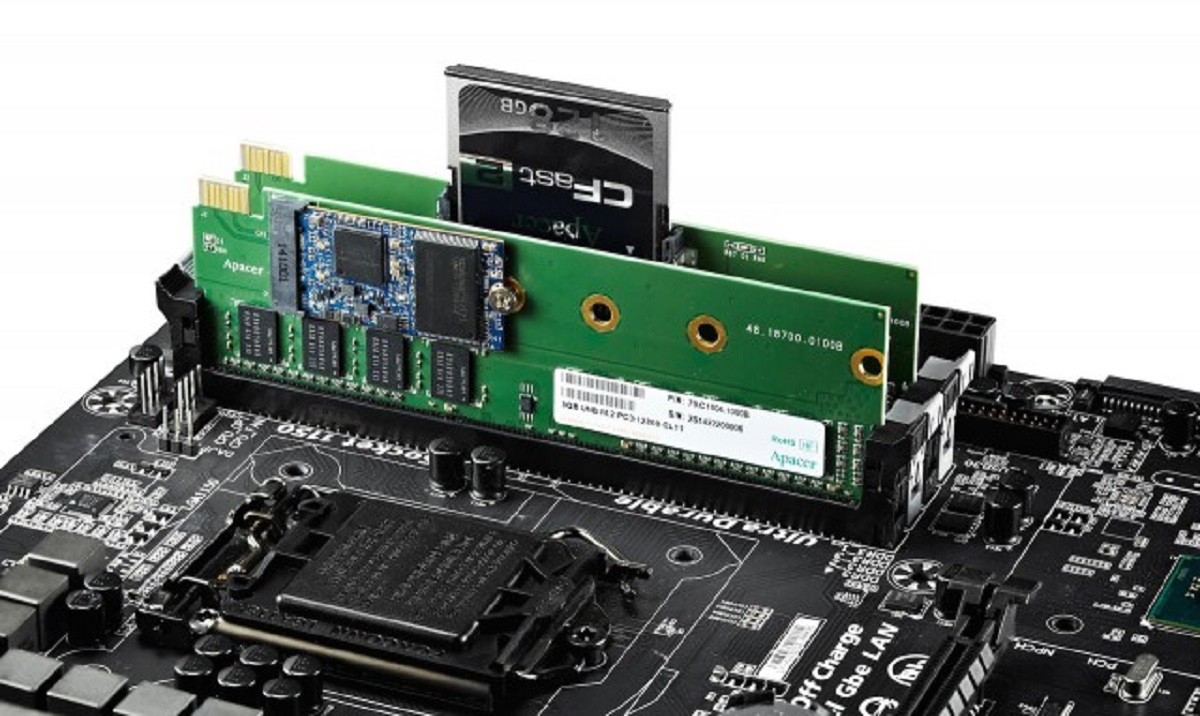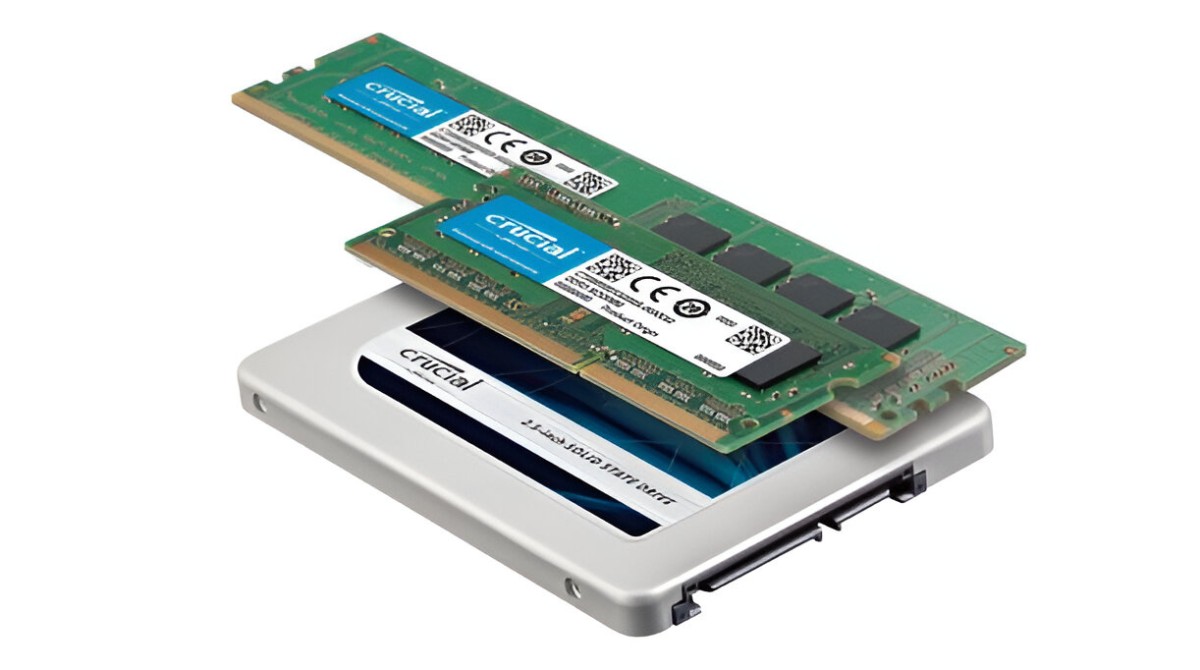Introduction
Flash RAM, also known as Flash Memory, is a type of non-volatile computer memory that has revolutionized the way we store and access data in electronic devices. It offers a combination of high speed, durability, and low power consumption, making it an indispensable component in various technologies, including smartphones, tablets, digital cameras, and USB drives.
This article will explore the fundamentals of Flash RAM, how it works, its advantages and limitations, as well as its applications and the different types available in the market. By understanding the inner workings of Flash RAM, you’ll gain insight into why it has become such an essential part of our modern technological landscape.
Flash RAM, often referred to simply as “Flash,” is a type of non-volatile memory that retains data even when power is turned off. Unlike traditional RAM (Random Access Memory) which is volatile and requires constant power to store and retrieve data, Flash RAM offers a persistent storage solution without the need for power backup.
The development of Flash RAM has been a significant advancement in memory technology, especially compared to older forms of non-volatile storage like hard disk drives (HDDs) or floppy disks. Flash RAM provides several key benefits that have made it the storage medium of choice for many electronic devices.
What is Flash RAM?
Flash RAM, short for Flash Random Access Memory, is a type of non-volatile computer memory that allows for the storage and retrieval of data even when the power is turned off. It was developed to overcome the limitations of traditional RAM, which loses its data once the power supply is cut off.
Unlike its volatile counterpart, Flash RAM provides persistent storage, meaning that it retains data even without continuous power. This characteristic makes it ideal for applications where data needs to be stored for long periods, such as in smartphones, digital cameras, and USB drives.
The name “Flash” comes from the ability of the memory cells to be electrically erased and reprogrammed quickly, or “flashed,” with new data. This process allows for the efficient and dynamic storage and retrieval of information.
Flash RAM consists of a grid of memory cells, each capable of storing multiple bits of data. These cells are organized into pages, blocks, and sectors, which collectively manage the storage and retrieval operations. When data is written to a Flash RAM cell, an electrical charge is applied to modify the state of the cell, either to store a ‘0’ or a ‘1’.
One of the significant advantages of Flash RAM is its non-volatile nature, which means that data remains intact even without power. This attribute makes Flash RAM ideal for applications where data integrity is crucial, such as operating systems and firmware storage.
Another notable characteristic of Flash RAM is its ability to perform random access operations, meaning that data can be read or written in any order, unlike traditional storage devices that require sequential access. This random access feature provides high-speed data transfer rates, reducing latency and enhancing overall system performance.
As Flash RAM technology continues to advance, it becomes more cost-effective and offers higher storage capacities. Manufacturers are constantly improving the architecture and designs of Flash RAM to meet the growing demand for storage in smartphones, tablets, and other electronic devices.
How Does Flash RAM Work?
Flash RAM operates on the principle of using transistors to store and retrieve data. It consists of a grid of memory cells, each containing a transistor and a floating gate. The floating gate stores the electrical charge that determines the state of the cell, either as a ‘0’ or a ‘1’.
When data is written to a Flash RAM cell, a voltage is applied to the control gate, which allows electrons to tunnel through the insulating layer onto the floating gate. This process traps the electrons, creating a negative charge in the floating gate and storing the data. The presence or absence of these trapped electrons determines the binary state of the cell.
To read data from a Flash RAM cell, voltage is applied to the control gate, and the current flowing between the source and drain is measured. If there are trapped electrons in the floating gate, the current level will be lower, indicating a stored ‘1’. Conversely, if the floating gate is empty, the current level will be higher, indicating a stored ‘0’.
One of the challenges faced in Flash RAM is erasing data. As electrons are trapped in the floating gate, they become difficult to remove. To address this issue, Flash RAM utilizes a process called “flash erase” where the entire block of memory cells is cleared simultaneously. This erasure is achieved by applying a higher voltage to the control gate and allowing electrons to tunnel back into the source or drain region, effectively neutralizing the charge on the floating gate.
The architecture of Flash RAM is designed to manage the storage and retrieval of data efficiently. Flash memory cells are grouped into pages, blocks, and sectors. A page is the smallest unit that can be read or written, typically in the range of 2 to 16 kilobytes (KB). Multiple pages form a block, which is typically composed of 16 to 128 pages. Finally, multiple blocks form a sector, typically containing several megabytes (MB) of data.
Flash RAM also employs wear-leveling algorithms to evenly distribute write and erase operations across the memory cells. This technique helps prevent certain cells from being overused and wearing out faster, thus extending the overall lifespan of the Flash RAM device.
Overall, the intricate design and operation of Flash RAM allow for high-speed, reliable data storage and retrieval. Its non-volatile nature, random access capabilities, and efficient management of memory cells make it an essential component in a wide range of electronic devices.
Advantages of Flash RAM
Flash RAM offers several advantages over traditional storage solutions, making it the preferred choice for many electronic devices. Here are some key advantages of Flash RAM:
- Non-Volatile Storage: Unlike volatile memory like RAM, Flash RAM retains data even when power is turned off. This characteristic ensures that important data is not lost in the event of a power failure or device shutdown.
- High Speed: Flash RAM provides fast read and write speeds, allowing for quick data access and transfer. This feature is essential in applications that require fast data processing, such as gaming, video playback, and file transfers.
- Low Power Consumption: Flash RAM consumes less power compared to traditional storage devices. Its efficient design and ability to retain data without continuous power make it ideal for battery-powered devices like smartphones and tablets.
- Durability: Flash RAM is more resistant to physical shocks and vibrations compared to traditional hard disk drives (HDDs) or solid-state drives (SSDs) with moving parts. This durability makes it suitable for portable devices that are frequently subjected to rough handling.
- Compact Design: Flash RAM has a small form factor, allowing for compact and lightweight device designs. This advantage is particularly beneficial in devices where space is limited, such as ultra-thin laptops and wearable devices.
- Wide Operating Temperature Range: Flash RAM can operate efficiently in a wide temperature range, making it suitable for use in extreme environments. It can withstand both high and low temperatures without compromising its performance or data integrity.
These advantages have contributed to the widespread adoption of Flash RAM in various applications, including consumer electronics, automotive systems, medical devices, and industrial equipment. As technology advances, the capacity and performance of Flash RAM continue to improve, further solidifying its position as a vital component in the digital world.
Limitations of Flash RAM
While Flash RAM offers many advantages, it is important to acknowledge its limitations. Here are some of the key limitations of Flash RAM:
- Limited Write Endurance: Flash RAM cells have a finite number of write cycles before they start to degrade. Each time data is written, the process of electrically erasing and reprogramming the cells causes a small amount of damage. Over time, this can lead to cell failure and data loss.
- Slow Write Speeds: Compared to read operations, writing data to Flash RAM is generally slower. The need to erase and reprogram cells introduces additional latency, affecting the overall write performance. This can be a limitation in applications that require frequent and intensive write operations.
- Limited Retention Time: Although Flash RAM is non-volatile, data retention is not indefinite. Over time, stored charges in the floating gates can leak, leading to data corruption or loss. The retention time of Flash RAM varies depending on factors such as temperature and the number of write cycles performed.
- Block Erase Requirement: Flash RAM requires erasing data in entire blocks, rather than individual cells. This can lead to inefficient use of storage space, as updating or deleting a small amount of data requires rewriting an entire block, even if other data in the block remains valid.
- Cost: Flash RAM can be more expensive compared to traditional storage options, such as hard disk drives (HDDs) or solid-state drives (SSDs). The higher cost per unit of storage can be a limitation, especially when large capacities are required.
- Limited Lifespan: Due to the finite write endurance and potential for data corruption over time, Flash RAM has a limited lifespan. Frequent write-intensive operations can accelerate this degradation, which may require replacing the Flash RAM in certain devices after a certain number of years.
Despite these limitations, Flash RAM remains a widely used and popular storage solution due to its unique benefits. Ongoing research and development efforts aim to address some of these limitations and improve the performance and reliability of Flash RAM technology.
Applications of Flash RAM
Flash RAM has found wide-ranging applications across various industries and devices. Its unique characteristics make it an ideal choice for storing and accessing data in different scenarios. Here are some notable applications of Flash RAM:
- Mobile Devices: Flash RAM is extensively used in smartphones, tablets, and portable media players. Its low power consumption, fast data access, and compact design make it perfect for these battery-powered devices that require high storage capacity for apps, multimedia files, and user data.
- Digital Cameras: Flash RAM is the preferred storage medium for digital cameras and camcorders due to its high-speed data transfer, durability, and ability to handle rapid read and write operations. It enables quick capture and saving of high-resolution images and videos.
- USB Drives: Flash RAM is the core technology behind USB flash drives, offering portable and reliable storage solutions for transferring and storing files. These compact devices are widely used for data backup, file sharing, and transporting files between computers.
- Solid-State Drives (SSDs): Flash RAM plays a crucial role in solid-state drives, which are rapidly replacing traditional hard disk drives (HDDs) in computers and laptops. SSDs offer faster boot times, improved system responsiveness, and higher reliability, all made possible by the high-speed data access and low latency of Flash RAM.
- Embedded Systems: Flash RAM is extensively used in embedded systems, such as those found in automotive electronics, medical devices, and industrial equipment. Its non-volatile nature, high endurance, and fast data access make it ideal for storing firmware, operating systems, and critical data in these applications.
- Cloud Storage: Flash RAM plays a significant role in cloud storage infrastructure. It enables quick access to stored data in data centers, ensuring fast retrieval and delivery of files to users. The speed and reliability of Flash RAM contribute to the overall performance and efficiency of cloud-based services.
These are just a few examples of the diverse applications of Flash RAM. As the technology continues to evolve, we can expect to see its utilization in other industries and emerging technologies that demand high-speed, non-volatile, and durable storage solutions.
Types of Flash RAM
Flash RAM technology has evolved over the years, giving rise to different types of Flash memory. Each type has its own characteristics, advantages, and use cases. Here are some commonly used types of Flash RAM:
- NAND Flash: NAND Flash is the most prevalent type of Flash RAM and is known for its high storage capacity and relatively low cost. It is used in various applications, including solid-state drives (SSDs), USB drives, memory cards, and electronic devices that require large storage capacities.
- NOR Flash: NOR Flash is another widely used type of Flash RAM. It is known for its fast read speeds and random access capabilities, making it suitable for applications such as firmware storage, system booting, and code execution in embedded systems.
- eMMC: eMMC (embedded MultiMediaCard) is a type of Flash memory that combines NAND Flash with a flash controller in a single chip. It is commonly found in smartphones, tablets, and other compact devices. eMMC provides a cost-effective storage solution with built-in error correction and wear leveling.
- SSD: Solid-State Drives (SSDs) are storage devices that utilize Flash RAM to provide high-performance, non-volatile storage for computers and laptops. SSDs offer faster data access, lower power consumption, and improved reliability compared to traditional hard disk drives (HDDs).
- SLC, MLC, and TLC: These are different types of NAND Flash based on the number of bits stored per cell. SLC (Single-Level Cell) stores one bit, MLC (Multi-Level Cell) stores two or four bits, and TLC (Triple-Level Cell) stores three bits. SLC offers higher endurance and performance, while TLC provides higher storage density and lower cost.
- 3D NAND: 3D NAND is an innovative form of NAND Flash that stacks memory cells vertically, enabling higher storage capacity in a smaller footprint and improved performance. This technology is commonly used in high-capacity SSDs, where maximizing storage density is crucial.
Each type of Flash RAM has its strengths and trade-offs, making them suitable for different applications. The choice of Flash memory type depends on factors such as cost, performance requirements, storage capacity, and reliability needs.
As Flash RAM technology continues to advance, new types and variations may emerge, further expanding the range of possibilities for data storage and memory-intensive applications.
Differences Between Flash RAM and Traditional RAM
Flash RAM and traditional RAM (Random Access Memory) are both types of computer memory, but they differ significantly in terms of their characteristics, functionality, and usage. Here are some key differences between Flash RAM and traditional RAM:
- Volatile vs. Non-Volatile: One of the primary distinctions is that traditional RAM is volatile, meaning it requires continuous power to retain data. In contrast, Flash RAM is non-volatile, allowing it to retain data even when power is turned off.
- Writing and Reading Data: Flash RAM utilizes electrical charges to write and read data, whereas traditional RAM stores data using capacitors. Flash RAM has slower write speeds compared to traditional RAM, mainly due to the need for erasing and reprogramming cells, but it offers faster read speeds.
- Storage Capacity: Traditional RAM typically has a smaller storage capacity compared to Flash RAM. Traditional RAM is used for temporary data storage and quick access, while Flash RAM is capable of storing larger amounts of data for longer-term use.
- Power Consumption: Flash RAM consumes significantly less power than traditional RAM. This makes Flash RAM well-suited for battery-powered devices and helps extend battery life in mobile devices.
- Cost: Traditional RAM is generally more affordable than Flash RAM. However, the price gap is closing as Flash RAM technology advances and becomes more prevalent.
- Random Access vs. Sequential Access: Traditional RAM allows for random access, meaning data can be accessed in any order without affecting performance. Flash RAM, on the other hand, has faster read times for random access but slower write times due to its block-based erasure requirement.
- Endurance: Traditional RAM can handle an infinite number of write and erase cycles, while Flash RAM has limited endurance. Frequent write operations can contribute to the wear and degradation of Flash RAM cells over time.
- Applications: Traditional RAM is commonly used as the main working memory in computers and servers, where speed and accessibility are crucial. Flash RAM, with its non-volatility and higher storage capacities, is widely used in portable devices, embedded systems, solid-state drives (SSDs), and other applications requiring persistent data storage.
Understanding the differences between Flash RAM and traditional RAM helps in determining the most suitable memory solution based on the specific requirements of an application or system. Each type of memory has its advantages and limitations, and their usage depends on factors such as power consumption, speed, cost, duration of data retention, and overall system design.
Conclusion
Flash RAM has revolutionized the way we store and access data in electronic devices. Its non-volatile nature, high-speed performance, low power consumption, and compact design make it an indispensable component in a wide range of applications.
From smartphones and tablets to digital cameras and USB drives, Flash RAM has become the go-to storage solution for many modern devices. Its ability to retain data even without power, coupled with its random access capabilities, provides a seamless user experience and enables efficient data management.
While Flash RAM offers numerous advantages, it also has its limitations. The finite write endurance, slower write speeds, and data retention considerations necessitate careful usage and management to ensure the longevity and reliability of the memory cells.
As technology continues to advance, we can expect further improvements in Flash RAM performance, capacity, and cost-effectiveness. Ongoing research and development efforts are focused on addressing the limitations, enhancing the endurance, and maximizing the potential of Flash RAM technology.
With its wide-ranging applications in mobile devices, digital cameras, solid-state drives, embedded systems, and more, Flash RAM will remain a crucial component in the ever-evolving world of technology.
In conclusion, Flash RAM has played a vital role in shaping the digital landscape by providing reliable, high-speed, and non-volatile storage solutions. Its influence will continue to expand as new innovations and applications emerge, further cementing its position as a cornerstone of modern computing.







